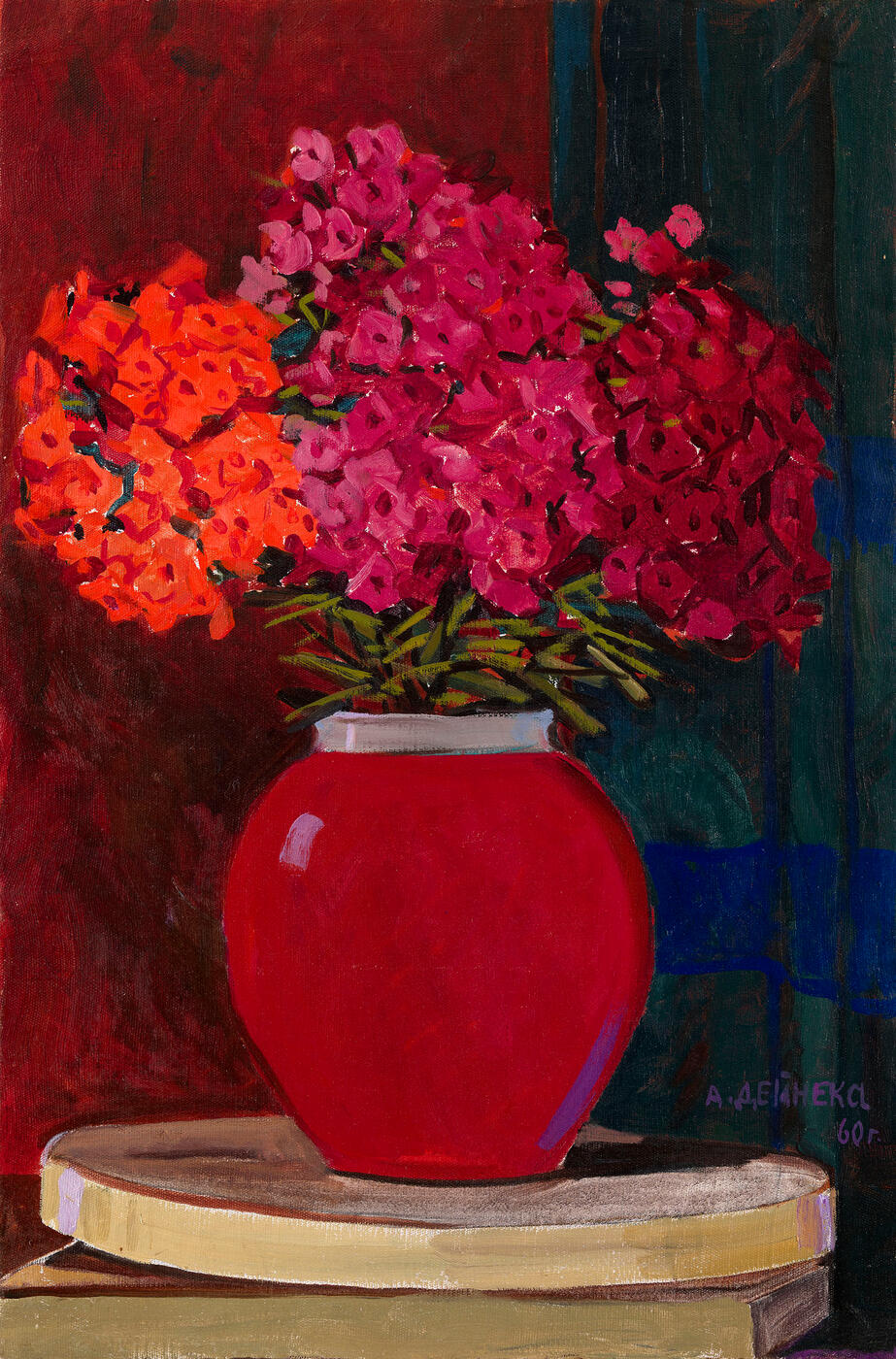MacDougall's Russian Art Auctions 27-30 May 2012
27 May 2012

* 47. DEINEKA, ALEKSANDR (1899-1969)
Phlox in a Red Jug, signed and dated 1960; bearing the label of the Moscow section of the Art Fund of the Russian Soviet Federative Socialist Republic on the stretcher.
Oil on canvas, 75.5 by 50 cm.
285,000–400,000 GBP
Provenance: Private collection, Europe.
Authenticity of the work has been confirmed by the expert Yu. Rybakova.
Aleksandr Deineka – bard of progress, speed, flight, metal, of the endless spaces being conquered by mankind, of the spearhead labour force, of sport – was no stranger to the subtler lyric of nature and human life. An interest in still life emerges in his work at the very beginning of the 1930s, evident in the
splendid cycle Dried Flowers. With the years, his attention to nature in bloom and the lyrical current in his painting only strengthens. Phlox in a Red Jug, a painting of 1960, is striking confirmation of this.
This eye-catching, festive still life composition bears the hallmark of Deineka’s style, showing the artist’s overriding tendency to see, even in flowers, strict architectural form, clear logic and structural completeness, an organised consistency of rhythm, and a well defined colour profile. It is no accident that
Deineka’s favourite ornamental plants are phlox and gladioli, which have a stable configuration and lend themselves to linear representation.
When the artist depicts the phlox, nurtured by the warmth of the sun, in all the vigour and luxuriousness of their flowering, he is also working in a profound way on the specifics of colour, studying the behaviour
of red in different textures and contexts: the living matter of clusters of blossom, the glazed ceramic of a vase and the textile of background drapery. The resulting colour spectrum of the painting is built on portraying the complex influences of one shade or tint on another.
For Deineka still life was always a creative laboratory, the sphere of artistic freedom in which he could
turn his back on the exaggerated generalisation and harsh focus demanded by his work on monumental paintings and decorative panels, and paint nature “at point-blank”, searching in her for idiosyncrasies and sculptural qualities that are never repeated. It was no chance remark of the painter’s when he said:
“When painting walls... I recall my... landscapes, flowers and sketches. Painting my huge great works without them would be like painting them without my soul.”
Notes on symbols:
* Indicates 5% Import Duty Charge applies.
Ω Indicates 20% Import Duty Charge applies.
§ Indicates Artist's Resale Right applies.
† Indicates Standard VAT scheme applies, and the rate of 20% VAT will be charged on both hammer price and premium.